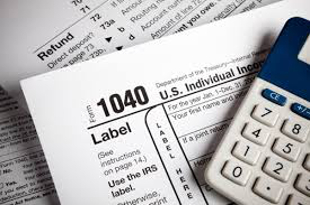
Affordable Tax Services: Tax Preparation Steps
Last updated: June 5, 2016
The IRS estimates that more than 60% of individual taxpayers use one a paid tax preparation service to prepare and submit their income tax returns. You will be asked to provide personal information, tax records and receipts. You’ll need to set aside time beforehand to gather together and organize all this information.
1. Choosing an affordable tax preparation service.
If you haven’t yet hired a tax preparer, don’t wait to the last minute. One of the ways to find a preparer is to ask for referrals from friends or attorneys you trust. Be sure that the person you choose has a Preparer Tax Identification Number (PTIN). The IRS requires a PTIN for all compensated tax preparers showing that he or she is authorized to prepare federal income tax returns. Ask about his fee schedule. Stay away from any preparers that charge a percentage of any refund.
2. Schedule an appointment.
Again, don’t wait too long. A good tax preparer or income tax preparation service could be fully booked by March 1st. The sooner you meet with your preparer, the sooner you can begin the process. You may need extra time to request missing forms and make any addition eligible deductible contributions.
3. Gather your tax records.
By the end of January you should be in possession of various tax and income forms that you will need. For each form, verify that there are no errors on the forms. Getting this corrected how will make the process go much easier later.
This is a list of some of the most commonly used forms. This list is not complete; a list of other less used forms that may be needed is available from the IRS.
Employment Form W-2 if you have a job
Various 1099s to report income such as:
Social Security benefits (SSA-1099)
dividends (1099-D)
interest (1099-INT)
non-employee compensation paid to independent contractors (1099-MISC)
securities gains and losses (1099-B)
cancellation of debt (1099-C)
Various 1098s reporting:
mortgage interest (1098)
student loan interest (1098-E)
tuition payments (1098-T)
Form W-2Gs for certain gambling winnings
4. Gather together your receipts.
You have the option of either taking the standard deduction or deciding if itemizing your personal deductions is appropriate (this is where those receipts come in). You may choose to itemize should this produce a greater write-off. Unfortunately, you will only know for sure is by determining the amount of your itemized deductions and then comparing them against your standard deduction amount. Medical expenses not covered by insurance or reimbursed by a health plan, property taxes, charitable contributions and job-related expenses are the most common. Your tax preparer can help you set up a system to organize them throughout the year.
Schedule C will be used if you have business related income and expenses to report; you’ll need a system for retaining these receipts also.
5. Create a list of personal and household information.
You’ll need your Social Security number, and the numbers of all dependents you will be claiming. Also the addresses of all rental properties and vacation homes, move dates, info about property that bought or sold, the original purchase prices, the sale prices and expenses incurred. All these will be needed to complete your return.
6. Decide whether a filing extension will be needed.
If more time is needed for the completion of these tasks, you can request a six month filing extension. A late filing penalty will be avoided by doing this; but to avoid a late-payment penalty be sure to make a payment for what you believe you might owe.
7. Determine what to do with any refund if you receive one.
Should you expect to get a refund, there are several options to decide among as to how you wish the government to return your refund:
Apply all or some portion of the refund toward next year’s tax bill.
The funds will be applied against estimated taxes or reducing the first installment of next year’s estimated taxes.
Mail you a check or deposit your refund directly into your bank account.
Directly deposit your refund into certain types of savings accounts
(IRAs, education savings accounts, health savings accounts) or purchase U.S. Savings bonds via Treasury Direct.
The Bottom Line
Starting early with the preparation work for next year’s income tax return will reduce the time and stress (and therefore the expense if you’re using a paid preparer).
